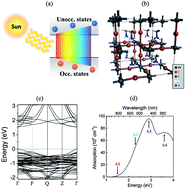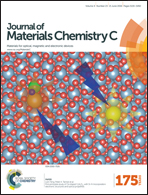Wavelength-dependent optical transition mechanisms for light-harvesting of perovskite MAPbI3 solar cells using first-principles calculations†
Abstract
The recently emerging class of solid-state hybrid organic–inorganic perovskite-based solar cells has demonstrated remarkably high power conversion efficiencies of up to ∼20%. It is expected that a detailed understanding of wavelength-(or energy-)dependent optical transition processes for light harvesting of perovskite solar cell materials will be a crucial factor to further improve the photovoltaic performances. In this work, we would like to employ the first-principles calculations to investigate the wavelength-(or energy-)dependent optical transition mechanism for light harvesting of the CH3NH3PbI3 perovskite material. A method called the band-resolved optical constant analysis technique was developed to investigate the wavelength-(or energy-)dependent optical absorption mechanism of the perovskite material. Based on the analyses, we are able to visualize and quantize the detailed wavelength-(or energy-)dependent optical transition processes involved in the broad absorption spectrum of a perovskite material, which provides deep insight into the understanding of the light-harvesting mechanism of this promising photovoltaic material.


 Please wait while we load your content...
Please wait while we load your content...